Grow Angled Luffa at Home and unlock the secrets to cultivating your own natural sponges! Have you ever imagined strolling into your backyard and harvesting a fresh, sustainable sponge, ready for your next bath or kitchen cleanup? It sounds like something out of a fairytale, but it’s entirely achievable with a little know-how.
The Luffa, also known as the sponge gourd, has a rich history, deeply rooted in Asian and African cultures. For centuries, these versatile gourds have been used not only for their fibrous interiors but also as a food source when young. Imagine the satisfaction of connecting with this ancient tradition, right in your own garden!
In today’s world, where sustainability and eco-consciousness are more important than ever, learning to grow angled luffa at home offers a fantastic way to reduce your reliance on synthetic sponges and embrace a more environmentally friendly lifestyle. Plus, let’s be honest, who wouldn’t want to impress their friends and family with their homegrown sponges? This DIY project is not only practical but also incredibly rewarding. I’m excited to share some simple tricks and tips that will help you successfully cultivate these amazing gourds, even if you’re a beginner gardener. Let’s get started!
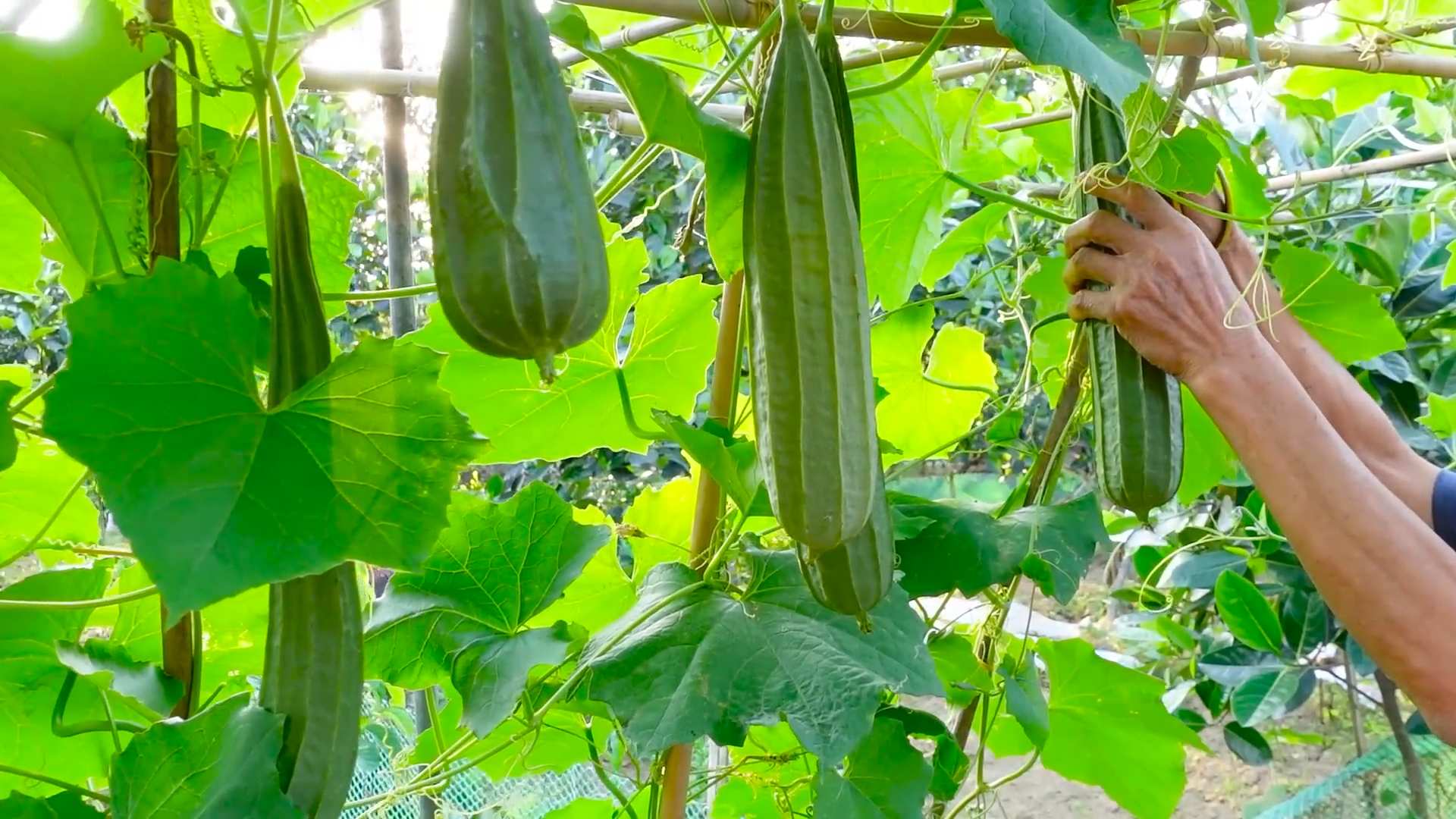
Grow Your Own Angled Luffa Sponges: A DIY Guide
Hey there, fellow gardening enthusiasts! Ever thought about growing your own sponges? I know, it sounds a little crazy, but it’s totally doable and incredibly rewarding. I’m talking about angled luffa, also known as Chinese okra or ridge gourd. These amazing plants produce fruits that, when dried, transform into fantastic natural sponges. Forget those synthetic scrubbers – let’s get growing!
Choosing Your Luffa Variety
Before we dive in, it’s important to note that there are two main types of luffa: *Luffa aegyptiaca* (smooth luffa) and *Luffa acutangula* (angled luffa). We’re focusing on the angled luffa because it’s generally easier to grow and produces a more robust sponge. Plus, the ridges make it look super cool!
Getting Started: Seeds and Seedlings
Okay, let’s get our hands dirty! The first step is starting your luffa seeds. You can either sow them directly into the ground (if you live in a warm climate with a long growing season) or start them indoors. I prefer starting them indoors because it gives them a head start and protects them from unpredictable weather.
Here’s what you’ll need:
* Luffa seeds (angled luffa, of course!)
* Seed starting trays or small pots
* Seed starting mix (a light, well-draining soil)
* A warm, sunny location or a grow light
* Watering can or spray bottle
Step-by-Step Seed Starting:
1. Soaking the Seeds: Luffa seeds have a tough outer shell, so soaking them in warm water for 24-48 hours will help them germinate faster. I usually put them in a small bowl and change the water once or twice. You’ll notice they swell up a bit – that’s a good sign!
2. Planting the Seeds: Fill your seed starting trays or pots with seed starting mix. Make a small hole (about 1 inch deep) in each cell or pot. Place one or two seeds in each hole and cover them gently with soil.
3. Watering: Water the soil thoroughly, but be careful not to overwater. You want the soil to be moist, not soggy. I like to use a spray bottle to avoid disturbing the seeds.
4. Providing Warmth and Light: Luffa seeds need warmth to germinate. The ideal temperature is around 70-80°F (21-27°C). If you don’t have a naturally warm spot, you can use a heat mat. Place the trays or pots in a sunny location or under a grow light. If using a grow light, keep it on for about 14-16 hours a day.
5. Patience is Key: Germination can take anywhere from 7 to 21 days, so be patient! Keep the soil moist and the temperature consistent. Once the seedlings emerge, make sure they get plenty of light.
Preparing Your Garden Bed
While your seedlings are growing, it’s time to prepare your garden bed. Luffa plants are vigorous growers and need plenty of space and sunshine.
Here’s what you’ll need:
* A sunny location with at least 6-8 hours of direct sunlight per day
* Well-draining soil (amend with compost if necessary)
* A sturdy trellis or support structure (more on this later!)
* Compost or aged manure
* Gardening tools (shovel, rake, etc.)
Step-by-Step Garden Bed Preparation:
1. Choosing the Right Location: Select a spot in your garden that gets plenty of sunlight. Luffa plants need at least 6-8 hours of direct sunlight per day to thrive.
2. Soil Preparation: Luffa plants prefer well-draining soil that is rich in organic matter. If your soil is heavy clay or sandy, amend it with compost or aged manure. This will improve drainage and provide essential nutrients. Dig the compost into the soil to a depth of about 12 inches.
3. Building a Trellis: This is crucial! Luffa vines can grow up to 30 feet long, so they need a strong trellis or support structure to climb on. You can use a variety of materials, such as wood, metal, or even sturdy netting. I’ve used cattle panels bent into an arch with great success. Make sure the trellis is at least 6-8 feet tall and wide enough to accommodate the growing vines. Secure the trellis firmly in the ground.
4. Spacing: If you’re planting multiple luffa plants, space them about 2-3 feet apart. This will give them enough room to grow and prevent overcrowding.
Transplanting Your Seedlings
Once your seedlings have developed a few sets of true leaves (usually after about 4-6 weeks), they’re ready to be transplanted into the garden.
Step-by-Step Transplanting:
1. Hardening Off: Before transplanting, you need to “harden off” your seedlings. This means gradually exposing them to outdoor conditions over a period of about a week. Start by placing them outside in a sheltered location for a few hours each day, gradually increasing the amount of time they spend outdoors. This will help them adjust to the sun, wind, and temperature changes.
2. Transplanting: Choose a cloudy day or transplant in the late afternoon to avoid shocking the seedlings. Dig a hole in the prepared garden bed that is slightly larger than the root ball of the seedling. Gently remove the seedling from its pot or tray and place it in the hole. Backfill with soil and water thoroughly.
3. Mulching: Apply a layer of mulch around the base of the plants to help retain moisture and suppress weeds. I like to use straw or wood chips.
Caring for Your Luffa Plants
Now that your luffa plants are in the ground, it’s time to provide them with the care they need to thrive.
Here’s what you’ll need to do:
* Water regularly, especially during dry periods.
* Fertilize every few weeks with a balanced fertilizer.
* Train the vines to climb the trellis.
* Watch out for pests and diseases.
Step-by-Step Care:
1. Watering: Luffa plants need consistent moisture, especially during hot weather. Water deeply and regularly, but avoid overwatering. The soil should be moist, not soggy. I usually water in the morning to allow the foliage to dry before nightfall, which helps prevent fungal diseases.
2. Fertilizing: Luffa plants are heavy feeders and benefit from regular fertilization. Use a balanced fertilizer (such as 10-10-10) every few weeks. You can also side-dress with compost or aged manure.
3. Training the Vines: As the luffa vines grow, you’ll need to train them to climb the trellis. Gently guide the vines towards the trellis and tie them loosely with twine or plant ties. They will eventually start to cling to the trellis on their own.
4. Pest and Disease Control: Luffa plants are generally pest-resistant, but they can be susceptible to certain pests and diseases, such as squash bugs, cucumber beetles, and powdery mildew. Inspect your plants regularly for signs of infestation or disease. If you spot any problems, take action immediately. You can use organic pesticides or fungicides to control pests and diseases. For powdery mildew, ensure good air circulation and avoid overhead watering.
Harvesting Your Luffa Sponges
This is the exciting part! Harvesting your luffa sponges is a bit of an art, but once you get the hang of it, it’s easy.
Here’s what you’ll need:
* Sharp knife or pruning shears
* Gloves (optional, but recommended)
* A well-ventilated area for drying
Step-by-Step Harvesting:
1. Knowing When to Harvest: The key to harvesting luffa sponges is to wait until the fruits are fully mature and the skin has turned brown and dry. The fruits should feel lightweight and hollow. You might even hear the seeds rattling inside. This usually happens in the late fall or early winter, depending on your climate.
2. Cutting the Luffa: Use a sharp knife or pruning shears to cut the luffa fruits from the vine. Leave a few inches of stem attached to the fruit.
3. Peeling the Luffa: This can be a bit messy, so I recommend wearing gloves. The easiest way to peel the luffa is to crush the dried skin with your hands and then peel it away. You can also soak the luffa in water for a few minutes to soften the skin, but be careful not to soak it for too long, as this can damage the sponge.
4. Removing the Seeds: Once the skin is removed, you’
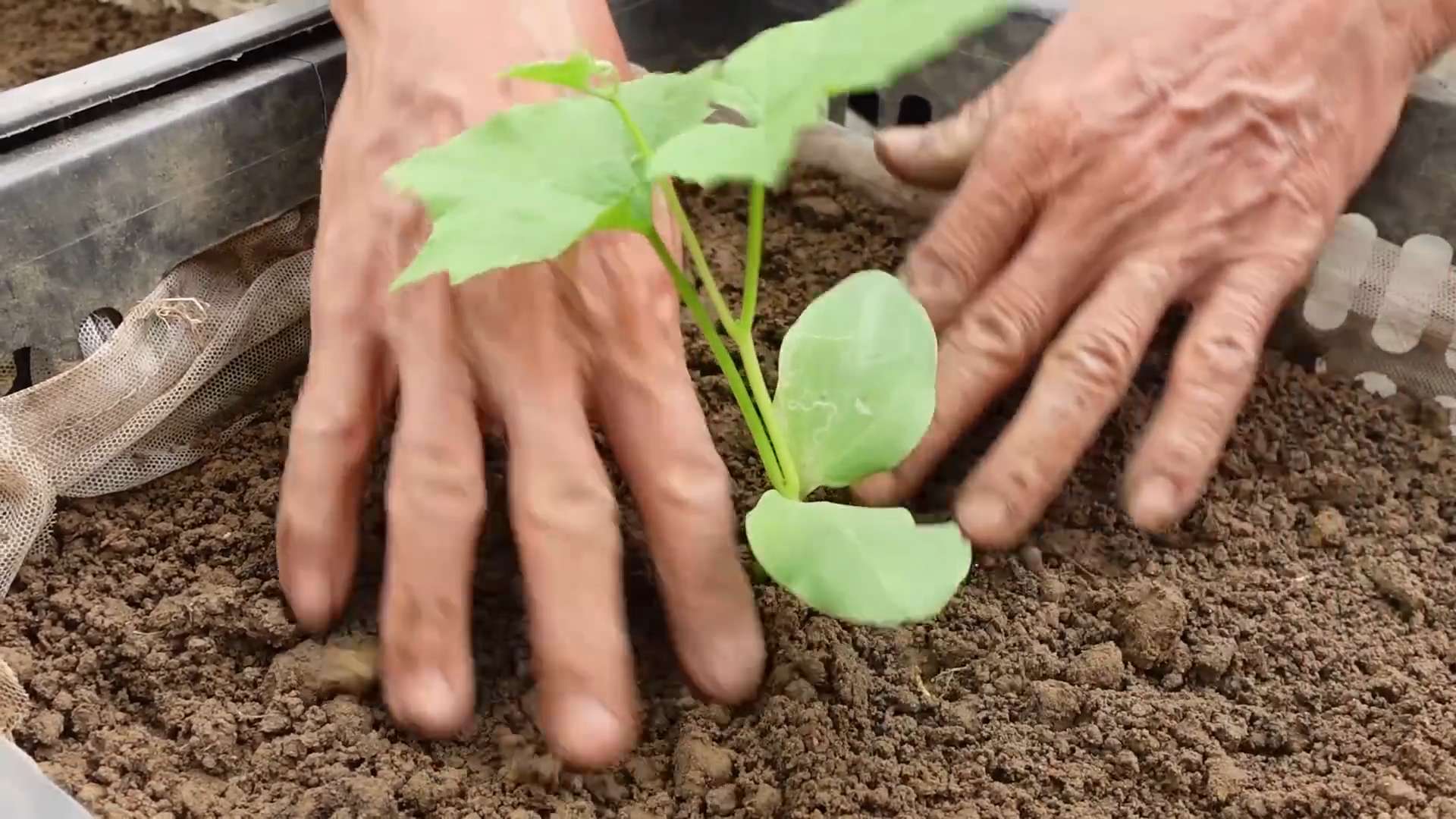
Conclusion
So, there you have it! Growing your own angled luffa at home is not just a gardening project; it’s an investment in sustainable living, a journey of discovery, and a pathway to incredibly useful and satisfying homemade products. Forget those mass-produced, often chemically treated sponges from the store. Imagine the pride and satisfaction of exfoliating with a luffa you nurtured from seed to shower!
This DIY trick is a must-try for several compelling reasons. First, you gain complete control over the growing process, ensuring your luffas are free from harmful pesticides and herbicides. Second, you significantly reduce your environmental footprint by avoiding the transportation and packaging associated with commercially produced luffas. Third, and perhaps most importantly, you unlock a rewarding and educational experience, connecting with nature and learning about the fascinating life cycle of this unique plant.
But the fun doesn’t stop there! Consider these variations to personalize your angled luffa growing experience:
* Vertical Gardening: If you’re short on space, train your luffa vines to climb a trellis or fence. This not only maximizes your yield but also creates a beautiful green wall.
* Companion Planting: Plant basil, marigolds, or nasturtiums near your luffa vines to deter pests and attract beneficial insects.
* Seed Saving: Once your luffas are fully mature, save the seeds for future planting. This ensures a continuous supply of luffas and allows you to adapt your plants to your specific climate.
* Luffa Crafts: Beyond exfoliating, dried luffas can be used in a variety of crafts, from soap embeds to decorative items. Let your creativity run wild!
* Gifting: Homemade luffa sponges make thoughtful and unique gifts for friends and family. Package them with a natural soap for an extra special touch.
We understand that embarking on a new gardening adventure can be daunting, but we assure you that growing angled luffa is a surprisingly straightforward and rewarding process. With a little patience, care, and the guidance provided in this article, you’ll be harvesting your own homegrown sponges in no time.
Don’t just take our word for it! We wholeheartedly encourage you to try this DIY trick and experience the joy of growing your own angled luffa. We are confident that you will be amazed by the results.
Once you’ve harvested your first luffa, we’d love to hear about your experience! Share your tips, tricks, and photos in the comments section below. Let’s build a community of luffa enthusiasts and inspire others to embrace the joys of sustainable gardening. Happy growing!
Frequently Asked Questions (FAQ)
Q: How long does it take to grow an angled luffa?
A: The time it takes to grow an angled luffa from seed to harvest can vary depending on your climate and growing conditions. Generally, it takes around 120 to 150 days. In warmer climates with long growing seasons, you may be able to harvest luffas in as little as four months. In cooler climates, you may need to start your seeds indoors to give them a head start. Be patient, and remember that consistent watering, fertilization, and sunlight are key to a successful harvest.
Q: What kind of soil is best for growing angled luffa?
A: Angled luffa thrives in well-drained, fertile soil that is rich in organic matter. Before planting, amend your soil with compost, aged manure, or other organic amendments to improve its drainage and nutrient content. A slightly acidic to neutral soil pH (around 6.0 to 7.0) is ideal. If your soil is heavy clay, consider adding sand or perlite to improve drainage. Regular soil testing can help you determine if your soil needs any additional amendments.
Q: How much sunlight does angled luffa need?
A: Angled luffa requires at least 6 to 8 hours of direct sunlight per day to thrive. Choose a planting location that receives plenty of sunlight throughout the day. If you live in a particularly hot climate, some afternoon shade may be beneficial to prevent the vines from overheating. Insufficient sunlight can result in stunted growth, reduced flowering, and smaller luffa fruits.
Q: How often should I water my angled luffa plants?
A: Angled luffa plants need consistent watering, especially during hot, dry weather. Water deeply and regularly, ensuring that the soil remains moist but not waterlogged. Avoid overhead watering, as this can promote fungal diseases. A good rule of thumb is to water when the top inch of soil feels dry to the touch. Mulching around the base of the plants can help retain moisture and suppress weeds.
Q: When is the best time to harvest angled luffa?
A: The best time to harvest angled luffa is when the fruit is fully mature but still green and slightly flexible. The skin should be firm but not rock hard. If you wait too long, the luffa will become overly fibrous and difficult to process. To test for ripeness, gently press on the luffa. If it feels firm and yields slightly, it’s ready to harvest. Use a sharp knife or pruning shears to cut the luffa from the vine, leaving a few inches of stem attached.
Q: How do I process angled luffa after harvesting?
A: Processing angled luffa involves removing the skin, seeds, and pulp to reveal the fibrous sponge inside. There are several methods you can use:
* Soaking: Soak the luffa in water for several days until the skin softens and begins to separate.
* Peeling: Use a vegetable peeler or knife to carefully remove the skin.
* Shaking: Shake the luffa vigorously to remove the seeds and pulp. You may need to rinse it several times to remove all the debris.
* Drying: Allow the luffa to dry completely in the sun or in a well-ventilated area. This may take several days or weeks, depending on the humidity.
Q: Can I eat angled luffa?
A: Yes, young angled luffa fruits can be eaten like zucchini or squash. They have a mild, slightly sweet flavor and can be used in stir-fries, soups, and other dishes. However, as the luffa matures, it becomes too fibrous to eat. Only harvest and consume young, tender luffa fruits.
Q: How do I store angled luffa seeds?
A: To store angled luffa seeds, first ensure they are completely dry. Place them in an airtight container, such as a glass jar or plastic bag, and store them in a cool, dark, and dry place. Properly stored luffa seeds can remain viable for several years. Label the container with the date of collection to keep track of their age.
Q: What are some common pests and diseases that affect angled luffa?
A: Angled luffa can be susceptible to various pests and diseases, including squash bugs, squash vine borers, aphids, powdery mildew, and fungal leaf spots. Regularly inspect your plants for signs of infestation or disease. Use organic pest control methods, such as insecticidal soap or neem oil, to control pests. Ensure good air circulation and avoid overhead watering to prevent fungal diseases. Remove and destroy any infected leaves or fruits to prevent the spread of disease.
Q: Can I grow angled luffa in containers?
A: Yes, you can grow angled luffa in containers, but you’ll need a large container (at least 20 gallons) to accommodate the plant’s extensive root system. Choose a container with good drainage and fill it with a well-draining potting mix. Provide a trellis or other support for the vines to climb. Container-grown luffas may require more frequent watering and fertilization than those grown in the ground.

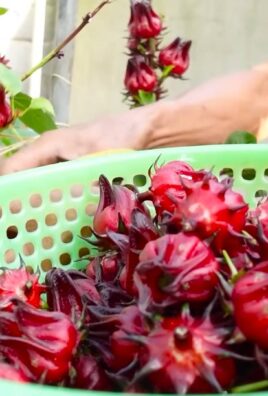
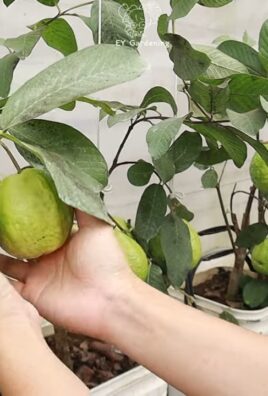
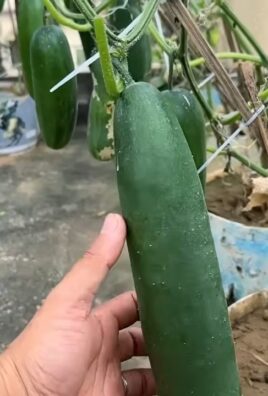
Leave a Comment